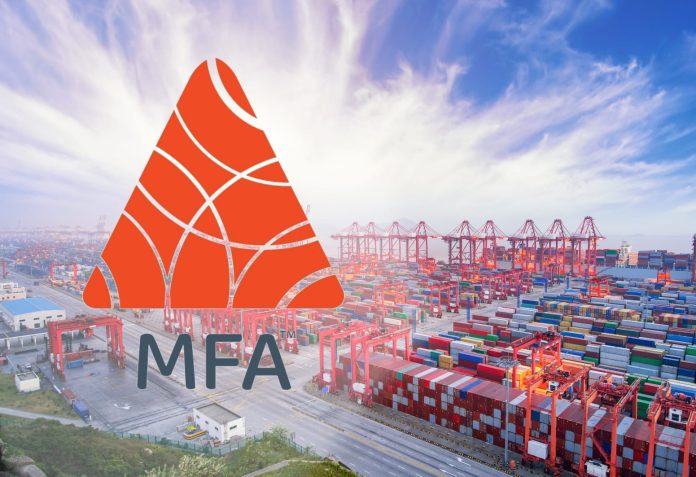Note, this article is continued from a previous entry, under the title, The big 5G problem – not networks, not spectrum, but devices (Talking 5G Blues). Asimakis Kokkos, chair of the technical specification working group at MFA, interviewed below, appears on a new webinar about how to scale industrial 5G, called Industrial 5G – from setting standard to becoming standard. Check back here also for a long-form editorial report under the same heading, available next week.
So, what blueprints? And how will these blueprints make 5G work for industry – so that industrial 5G devices connect to industrial 5G networks to spring industrial 5G solutions, in new ways?
MFA issued a set of ‘tech blueprints’ six months ago so different industrial ‘verticals’ can specify and source different industrial 5G devices, and the cellular side of the Industry 4.0 market moves faster. Their compilation, carried out with Beecham Research, trawled through 600-odd 5G NR specifications, as defined by 3GPP, to discern the most appropriate for enterprises, and provide a short-hand matrix to request them of chipset vendors and device makers.

In the end, from the 3GPP long-list of 600-ish 5G specifications, MFA filtered “no more than” 35 key features for industrial-style 5G devices – to put industrial-grade 5G networks through their paces, and make new industrial IoT applications possible. These were split into 10 ‘families’, or feature sets, to broadly align them by networking application. “Some had one or two features, some had five or six; the most was nine,” says Asimakis Kokkos, chair of the technical specification working group at MFA.
These were reduced again, to just four master-functions: for coverage, reliability, density, and latency. Further commonality resulted in just three blueprints. “The features that satisfy coverage tend to satisfy reliability, also; the same for network density and low latency”. In this way, MFA settled on a single family-blueprint for coverage and reliability, another for density and latency, and a third for higher-end systems that require all-of-the-above.
These family-blueprints are each offered in stripped-back form, to specify basic devices for each functional priority, and as richer feature sets for advanced devices with broader concerns. Which leaves six ‘blueprints’, we think – plus, we understand, a checklist of additional Release 15 features for each industrial vertical. If it sounds confusing, it is, a little; but the simplicity is probably just lost in explanation of the process, and the logic is clearly good.
The Release 15 blueprints are finished; work has started to rationalise Release 16 features for the same ends – and will be repeated for Releases 17 and 18, with each multiplying industry-specific 5G NR features, and presumably device-options for enterprises. “Each release has additional features, but these four areas – coverage, reliability, density, and latency – will continue. A lot of work items in Release 16 will contribute more to those,” says Kokkos.
He cites new enhancements (network slicing), new adaptations (unlicensed spectrum), and new introductions (native positioning; cellular IoT) with Release 16 (completed mid-2020). “I don’t know if there will be 35 or 70, but the approach will be the same.” Release 17 (mid-2022) will extend the prep work on ultra-reliable low-latency (URLLC) componentry, with new provisions for high frequency bands and private networks, notably, plus for headline features like deterministic time-sensitive networking (TSN).
But it will also formally address industrial cellular usage for the first time, and the MFA blueprints will (“hopefully”) be rolled into the 3GPP work schedule – much like the original MulteFire project, to appropriate LTE for unlicensed spectrum, has found its way back into the 3GPP agenda with 5G NR-U. “Release 17 is already focused on industrial cases, anyway, so we won’t have to do all the work ourselves; it will be done by 3GPP as well.”
But, hang on, back-up a moment: 600-odd features, down to 35 – or to four, or three? Is 5G over-specified for consumers, then, and under-cooked for enterprises? No. And it is an important ‘no’; the MFA exercise, to ensure industrial 5G features are not forgotten by IoT hardware makers, assumes a baseline of “300-400” features are included anyway as part of the enhanced mobile-broadband (eMBB) service category in the 5G NR standard.
By nature, these are go-faster functions, already familiar for consumer-grade devices; but they retain value for enterprises, too, clearly. “They haven’t been discarded; they are included already. We are just making sure the others are not left off device roadmaps. The thing to remember is even one feature can be really demanding – which is why enterprises will choose [from the MFA menu], and why there are these basic and advanced implementations.”
Kokkos adds: “What we’re saying is that, when you look at this huge list of features, and you see unlicensed spectrum, or native positioning, or cellular IoT, it is still up to the implementation guys to make it. And if your priority is the consumer type, although the features are there, the question is do you have guidance about which features to use to satisfy industrial demands? That is the work we are doing. We are just selecting them for industrial cases.”
It is not the only work it is doing, of course. The original MulteFire agenda, forced out of 3GPP circles, was to enable private LTE for industry in unlicensed spectrum, mainly in the global 5 GHz ‘Wi-Fi band’, plus others besides. It was, originally, the brain-child of Nokia, Ericsson, and Qualcomm; in the end, most of the donkey work was maintained by Nokia, Kokkos’ full-time employer, where he is in charge of tech ecosystems in its enterprise solutions division.
The word is the original MFA members are back on-board, although Kokkos will not say it was ever any different, exactly, and the MulteFire project has found its back into the 3GPP work agenda with 5G NR-U, and expanded beyond to drive the broader private LTE/5G story in dedicated licensed spectrum, as well. Kokkos says Industry 4.0 requires any and all the spectrum it can get its hands on.
“If you look at Industry 4.0, the choice for enterprises is between locally licensed spectrum, licensed spectrum from an operator, or unlicensed spectrum. And it should not have to be a choice; a combination of these should be available. Industry should be able to have it all, and have it all with cellular. Because the countries with locally licensed spectrum are many, but not as many as one would wish for. You have provisions in Germany, the UK; some other places. But it is only sporadically available, actually.

“Even in Europe – the southern half of Europe, for example, is suffering for that. We hope this will change, but it will take time. Regulation is difficult. And locally licensed spectrum is often limited, anyway. Enterprises don’t have the luxury of endless amounts of spectrum. So unlicensed cellular is needed, as well, as part of a combined system – on top, to put different services into different parts of the spectrum. This will be the great value MFA brings.”
He adds: “The difference with other unlicensed solutions, like Wi-Fi 6, is you can have a licensed system alongside, so you get two systems on the same platform, offering seamless handovers – licensed and unlicensed; LTE and MulteFire, 5G NR and 5G NR-U. And devices are so important because they are the key to the ecosystem-build. If you have devices with the right features, then you are in a good shape. Otherwise you need two different systems.”
Note, this article is continued from a previous entry, under the title, The big 5G problem – not networks, not spectrum, but devices (Talking 5G Blues). Asimakis Kokkos, chair of the technical specification working group at MFA, interviewed below, appears on a new webinar about how to scale industrial 5G, called Industrial 5G – from setting standard to becoming standard. Check back here also for a long-form editorial report under the same heading, available next week (cover image left).

